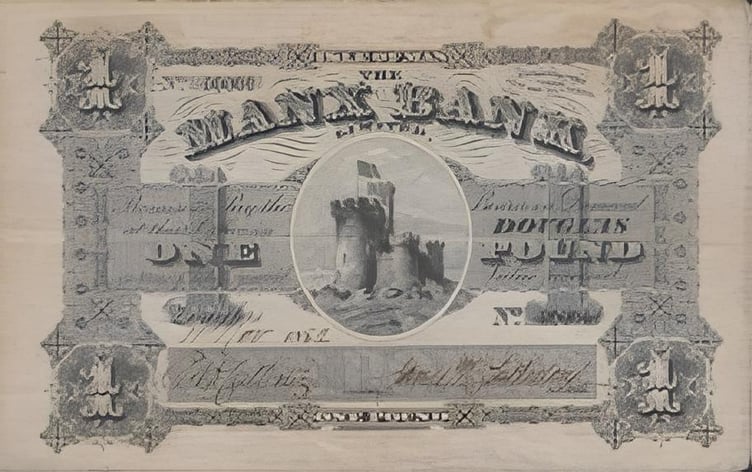The first ever bank note issued on the Isle of Man is set to go under the hammer.
The £1 note, with a ‘one’ serial number, dates back to November 1882 and will be sold to the highest bidder by Noonans during an auction in Mayfair, London, as part of a sale of British and Irish banknotes on Thursday, March 14, 2024. The ‘astonishing’ note is decorated with an old image of the Tower of Refuge in Douglas Harbour.
The item is expected to fetch between £10,000 and £15,000 when it goes under the hammer.
Andrew Pattison, Head of the Banknotes Department at Noonans, said, ‘This is an absolutely astonishing note and, in my opinion, the finest Isle of Man note in existence!
‘The imagery on it is iconic, showing locations everyone on the island knows and loves, and the fact that it is serial number one of the issue is a remarkable bonus.’
According to the auction house, the item is one of several rare Bank of England notes set to be sold off as part of the auction, all of which have rarely been seen at auction for several decades.
They include a large variety of banknotes from English provincial banks as well as banks in Ireland, Scotland, the Isle of Man, Jersey, and Guernsey.
Also among the lots will be a rare 95-year-old bank note issued by the Bank of England.
The £500 dates back to October 1929 and has been described by an expert as ‘staggeringly rare.’
It is the only known surviving £500 note signed by Basil G. Catterns, who was the Bank of England’s Chief Cashier between 1929 and 1934.
The lot is being sold by a long-time collector of British notes who has owned it for almost 15 years.
It is expected to fetch up to £24,000 when it goes under the hammer.
‘This is a staggeringly rare and important note, and it is in wonderful, clean condition, especially considering it is now almost 100 years old,’ Mr. Pattison said.
‘For anyone who collects Catterns notes or indeed any Bank of England notes, this would be likely the pinnacle of their collection.’
Other lots include an ‘exceptionally’ early £50 note signed by Abraham Newland, who was the bank’s Chief Cashier between 1782 and 1807, dating back to April 1780, which could fetch up to £32,000.
Mr. Pattison added: ‘Abraham Newland was quite a character, who apparently slept in the bank for 25 years.
‘This is one of only two notes of this denomination to be recorded, so it is truly remarkable.’





Comments
This article has no comments yet. Be the first to leave a comment.